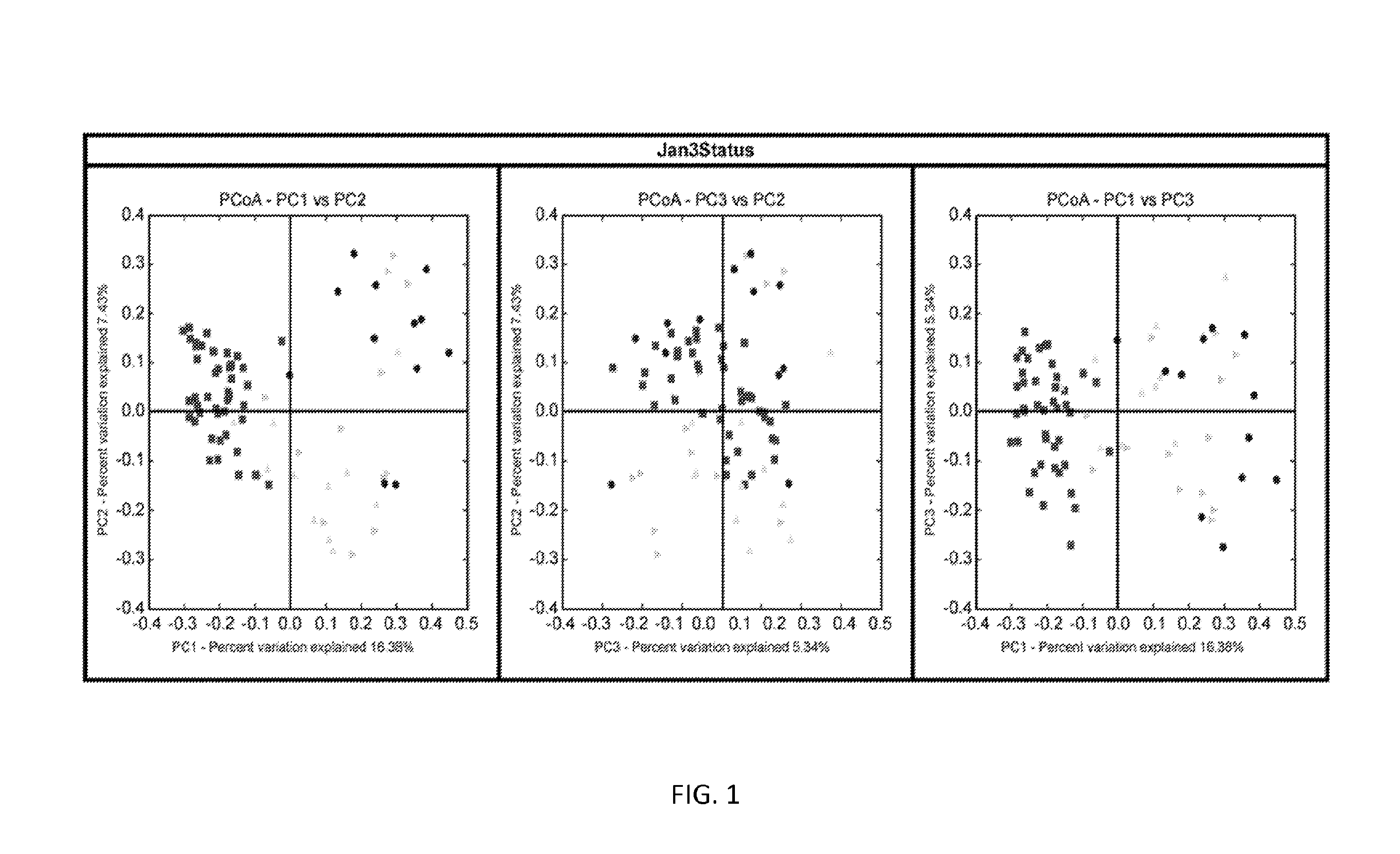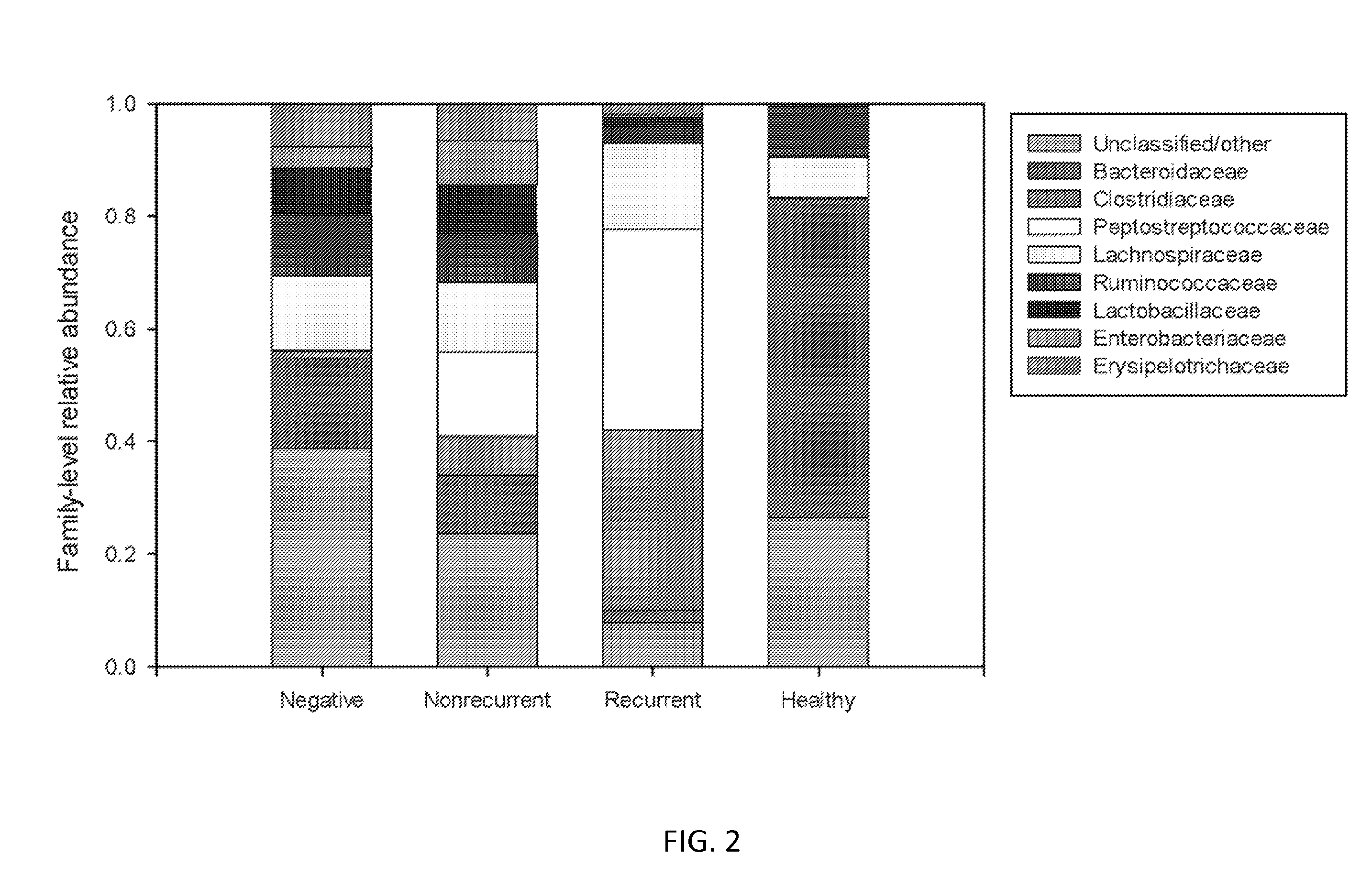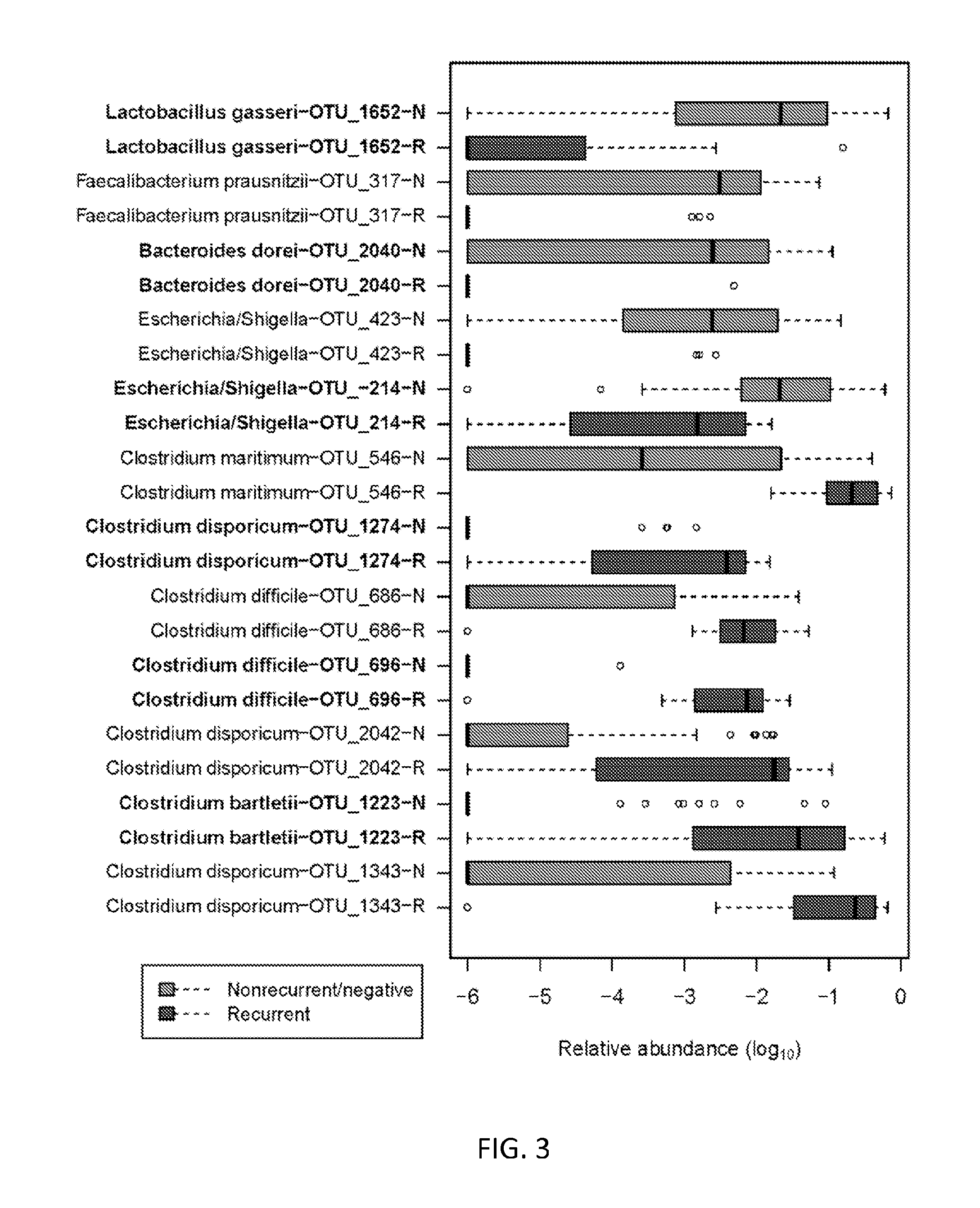Biomarkers of recurrent clostridium difficile infection
a technology of clostridium difficile and biomarkers, which is applied in the field of microorganisms, bacteriology, medicine, cell biology, can solve the problems of recurrence and significant fatality rates, long assay duration and/or sensitivity, and insufficient effectiveness of current fda-approved diagnostic assays for cdi, so as to avoid excessive use of particular antibodies and/or contain costs
- Summary
- Abstract
- Description
- Claims
- Application Information
AI Technical Summary
Benefits of technology
Problems solved by technology
Method used
Image
Examples
example 1
A Multi-Omics Approach to Understanding the Gut-Microbial Ecology and Mechanisms of Recurrent Clostridium Difficile Infection
[0143]Despite a known correlation between antimicrobial disruption of protective gut microflora and the development of symptoms in infected individuals, there is still a major gap in our understanding of why certain individuals are susceptible to disease recurrence by C. difficile. To address this question, the inventors profiled stool microbial community composition and the metabolome from individuals with and without CDI, and found that patients who subsequently develop recurrent disease have significant shifts in microbial populations and biochemical composition. Patients with recurrent disease were identified with decreased abundances of taxa belonging to the families Bacteroidaceae and Prevotellaceae, and increased abundances of taxa belonging to the families Peptostreptococcaceae (including C. difficile) and Clostridiaceae. Notably, in patients with recu...
example 2
Community Composition
[0145]The exemplary 16S ribosomal RNA gene is taxonomically informative for bacteria and archaea (i.e., the identity of a bacterium or archaeon can be discerned from the specific sequence of the organism's 16S rRNA gene(s). Additionally, the sequence composition of the 16S rRNA gene can be utilized to determine identity at multiple taxonomic levels (i.e., Phylum, Class, Order, Family, Genus, and Species).
[0146]Bacterial community composition is commonly characterized by obtaining mixed genomic DNA from a specimen of interest (e.g., stool, soil, dust, water, skin cells). This pool of DNA is amplified using primers that target the 16S rRNA gene, and this pool is then sequenced. The resulting sequence data may be queried (i.e. BLAST) against sequence databases in order to discern identity. Commonly, the sequences clustered into operational taxonomic units (OTUs) before the querying sequence databases (such as NCBI nr, the Ribosomal Database Project, or Greengenes)....
example 3
Predicting the Likelihood of Recurrence of CDI
[0149]In embodiments of the invention, multiple taxa contribute to the signature of recurrent CDI.
[0150]The 16S-based signature of recurrent CDI is apparent at multiple taxonomic levels. It is apparent at the operational taxonomic units (OTU) (i.e., numerical “species”) level, as illustrated by the red / gray bar graph included in FIG. 3. This exemplary signature includes significantly reduced abundances of Lactobacillus gasseri and Faecalibacterium prausntizii, as well as increased abundances of C. difficile, C. maritimum / C. romboutsii / C. ruminatium, C. disporicum, and C. bartletii. The predictive accuracy of this signature is ˜88% (i.e. error rate of 12%).
[0151]This signature may also be detected at the family level, in certain embodiments, and it is based on the relative abundance of two bacterial families (i.e. the Clostridiaceae and the Peptostreptococcaceae). Subjects with recurrent CDI are characterized by stool bacterial communitie...
PUM
| Property | Measurement | Unit |
|---|---|---|
| temperatures | aaaaa | aaaaa |
| temperatures | aaaaa | aaaaa |
| temperatures | aaaaa | aaaaa |
Abstract
Description
Claims
Application Information
 Login to View More
Login to View More - R&D
- Intellectual Property
- Life Sciences
- Materials
- Tech Scout
- Unparalleled Data Quality
- Higher Quality Content
- 60% Fewer Hallucinations
Browse by: Latest US Patents, China's latest patents, Technical Efficacy Thesaurus, Application Domain, Technology Topic, Popular Technical Reports.
© 2025 PatSnap. All rights reserved.Legal|Privacy policy|Modern Slavery Act Transparency Statement|Sitemap|About US| Contact US: help@patsnap.com



